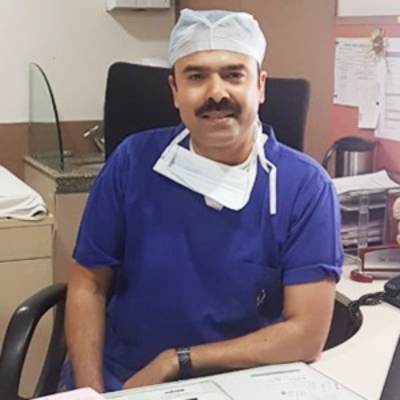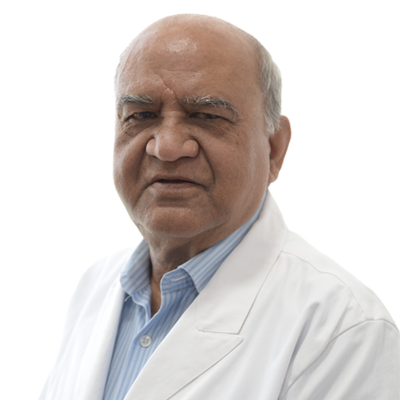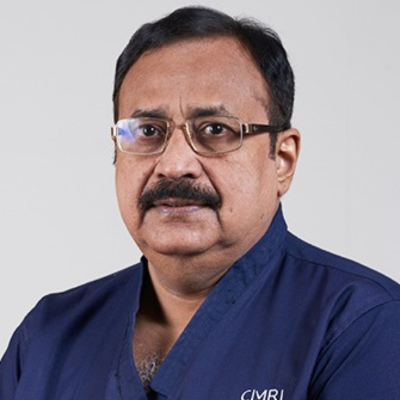Why South Sudan Chooses India for Medical Treatment?
 16 July,2024
Read More
16 July,2024
Read More
Enquire now in case of any assistance needed
Varicocele Intervention Treatment Cost in India is between USD 650 - USD 1100
Hospital Days: 1
Procedure Duration: 30 Min - 50 Min
Varicocele intervention refers to medical or surgical procedures aimed at treating varicoceles, which are enlarged veins within the scrotum. These dilated veins can lead to discomfort, testicular atrophy, and infertility due to impaired sperm production or function. Varicoceles are a common condition, affecting around 15% of the male population. Intervention typically involves repairing or blocking off the affected veins to restore normal blood flow and alleviate symptoms. Surgical options include open varicocelectomy or minimally invasive procedures like laparoscopic or microsurgical techniques. Non-surgical interventions may include embolization, where the vein is blocked using a small coil or chemical agent.
Varicocele intervention becomes necessary for several reasons, primarily to address the symptoms and potential complications associated with this condition. Below are the key reasons why varicocele intervention is often recommended:
Varicocele intervention is crucial to alleviate pain and discomfort, improve fertility outcomes, prevent testicular atrophy, alleviate psychological distress, and potentially prevent future complications. Timely intervention can significantly improve the overall well-being and reproductive health of individuals affected by varicoceles.
Varicocele, an enlargement of veins within the scrotum, often requires intervention due to associated discomfort, infertility, or potential complications. Several approaches exist for managing varicocele, each tailored to the severity of symptoms and patient preferences.
The choice of intervention depends on factors such as symptom severity, fertility concerns, and patient preferences, to improve quality of life and reproductive health.
Several factors influence the cost of varicocele intervention, ranging from the type of procedure to additional healthcare expenses:
Understanding these factors helps patients make informed decisions and plan for the financial aspects of varicocele intervention.
Patients are carefully selected for varicocele intervention based on several factors, including symptoms, clinical findings, and the potential impact on fertility. Here are the key considerations
The decision to undergo varicocele intervention is made collaboratively between the patient and their healthcare provider, taking into account individual circumstances, preferences, and treatment goals.
Diagnostic tests and evaluations play a crucial role in determining the need for varicocele intervention, helping healthcare providers assess symptoms, confirm the diagnosis, and evaluate the impact on fertility. Here's an overview of the key diagnostic procedures:
By combining information from these diagnostic tests and evaluations, healthcare providers can accurately assess the need for varicocele intervention and tailor treatment recommendations to each patient's unique circumstances, symptoms, and fertility goals.
Varicocele intervention, whether through embolization, surgery, or microsurgery, presents a range of risks and benefits that should be carefully considered by both patients and healthcare providers.
Before deciding on varicocele intervention, healthcare providers thoroughly discuss these risks and benefits with patients, taking into account individual health status, preferences, and treatment goals. The decision-making process involves a collaborative effort to ensure the best possible outcome for the patient.
Recovery and rehabilitation following varicocele intervention, whether it's embolization, surgery, or microsurgery, are crucial aspects of ensuring optimal outcomes and minimizing complications. Here's what patients can typically expect during the recovery process:
Following the healthcare provider's instructions regarding recovery and rehabilitation is essential for a successful outcome after varicocele intervention. Open communication with the healthcare team and adherence to post-operative guidelines contribute to a smoother recovery process and improved long-term outcomes.
After undergoing varicocele intervention, patients can anticipate a phased recovery process that involves immediate post-procedure care, short-term adjustments, and long-term considerations. Here's a comprehensive overview of what to expect:
Throughout the recovery process, open communication with the healthcare team is essential. Patients are encouraged to adhere to post-operative guidelines, attend follow-up appointments, and promptly report any unexpected symptoms or complications. A collaborative approach between the patient and healthcare provider ensures a smoother recovery and improved long-term outcomes.
Varicocele intervention can be performed through several techniques, including embolization, surgical varicocelectomy, and microsurgical varicocelectomy. Here's an overview of each method:
Each varicocele intervention technique has its advantages and considerations, and the choice of approach depends on factors such as the patient's anatomy, the severity of the varicocele, and the surgeon's expertise.

Senior Consultant
Robotic Urologist, Uro-oncologist, Urologist
Indraprastha Apollo Hospital, New Delhi
View Doctor Profile Book an Appointment
Senior Consultant
Pediatric Urologists, Uro-oncologist, Urologist
Indraprastha Apollo Hospital, New Delhi
View Doctor Profile Book an Appointment

Group Chairman
Robotic Urologist, Urologist
Medanta - The Medicity Hospital, Gurgaon
View Doctor Profile Book an Appointment
Vice Chairman
Robotic Urologist, Surgical Oncologists, Uro-oncologist, Urologist
Medanta - The Medicity Hospital, Gurgaon
View Doctor Profile Book an Appointment
Senior Director
Urologist
Medanta - The Medicity Hospital, Gurgaon
View Doctor Profile Book an Appointment
Senior Director
Robotic Urologist, Uro-oncologist, Urologist
Medanta - The Medicity Hospital, Gurgaon
View Doctor Profile Book an Appointment
Consultant
Uro-oncologist, Urologist

Head of Department (HOD)
Pediatric Urologists, Urologist


Senior Consultant
Pediatric Gastroenterologists, Pediatric Urologists

Consultant
Uro-oncologist, Urologist
Fortis Hospital, Bannerghatta Road, Bangalore
View Doctor Profile Book an Appointment
Director
Pediatric Urologists, Urologist
Fortis Hospital, Vasant Kunj, New Delhi
View Doctor Profile Book an Appointment
Consultant
Uro-oncologist, Urologist
Fortis Hospital, Rajajinagar, Bangalore
View Doctor Profile Book an Appointment
Consultant
Uro-oncologist, Urologist
Fortis Hospital, Rajajinagar, Bangalore
View Doctor Profile Book an Appointment
Head of Department (HOD)
Uro-oncologist, Urologist
PSRI Multispeciality Hospital, Delhi
View Doctor Profile Book an Appointment

Associate Chief
Robotic Urologist, Uro-oncologist, Urologist

Senior Consultant
Uro-oncologist, Urologist
PSRI Multispeciality Hospital, Delhi
View Doctor Profile Book an Appointment
Consultant
Uro-oncologist, Urologist
Manipal Hospital Formerly Columbia Asia, Palam Vihar, Gurgaon
View Doctor Profile Book an Appointment
Consultant
Pediatric Urologists, Uro-oncologist, Urologist
Manipal Hospital Formerly Columbia Asia, Palam Vihar, Gurgaon
View Doctor Profile Book an Appointment
Director
Uro-oncologist, Urologist
Indraprastha Apollo Hospital, New Delhi
View Doctor Profile Book an Appointment
Senior Consultant
Pediatric Urologists, Robotic Urologist, Uro-oncologist, Urologist
Indraprastha Apollo Hospital, New Delhi
View Doctor Profile Book an Appointment
Senior Consultant
Robotic Urologist, Urologist
Indraprastha Apollo Hospital, New Delhi
View Doctor Profile Book an Appointment
Head of Department (HOD)
Urologist
BLK-Max Super Speciality Hospital, New Delhi
View Doctor Profile Book an Appointment
Head of Department (HOD)
Robotic Urologist, Urologist
Manipal Hospital, Dwarka, Delhi
View Doctor Profile Book an Appointment
Senior Consultant
Robotic Urologist, Uro-oncologist, Urologist
Manipal Hospital, Dwarka, Delhi
View Doctor Profile Book an Appointment
Senior Consultant
Pediatric Urologists, Urologist
Indraprastha Apollo Hospital, New Delhi
View Doctor Profile Book an Appointment
Consultant
Robotic Urologist, Urologist
Fortis Hospital, Greater Noida
View Doctor Profile Book an Appointment

Director
Uro-oncologist, Urologist
Aakash Healthcare Super Speciality Hospital, Dwarka, New Delhi
View Doctor Profile Book an Appointment
Consultant
Robotic Urologist, Urologist

Additional Director
Urologist
Fortis Hospital, Bannerghatta Road, Bangalore
View Doctor Profile Book an Appointment
Senior Consultant
Robotic Urologist, Uro-oncologist, Urologist

Director
Urologist
Fortis Hospital, Vasant Kunj, New Delhi
View Doctor Profile Book an Appointment
Consultant
Urologist
Fortis Hospital, Rajajinagar, Bangalore
View Doctor Profile Book an Appointment
Senior Consultant
Urologist
Indraprastha Apollo Hospital, New Delhi
View Doctor Profile Book an Appointment
Chairperson
Pediatric Urologists, Uro-oncologist, Urologist

Senior Consultant
Urologist
Indraprastha Apollo Hospital, New Delhi
View Doctor Profile Book an Appointment


Director
Urologist
Medanta - The Medicity Hospital, Gurgaon
View Doctor Profile Book an Appointment
Director
Robotic Urologist, Uro-oncologist, Urologist
Medanta - The Medicity Hospital, Gurgaon
View Doctor Profile Book an Appointment
Senior Consultant
Robotic Urologist, Urologist
Medanta - The Medicity Hospital, Gurgaon
View Doctor Profile Book an Appointment
Consultant
Robotic Urologist, Uro-oncologist, Urologist
Medanta - The Medicity Hospital, Gurgaon
View Doctor Profile Book an Appointment
Chairman
Urologist
Medanta - The Medicity Hospital, Gurgaon
View Doctor Profile Book an Appointment
Director
Pediatric Urologists
Medanta - The Medicity Hospital, Gurgaon
View Doctor Profile Book an Appointment
Consultant
Urologist
Primus Super Speciality Hospital, New Delhi
View Doctor Profile Book an Appointment
Consultant
Cardiothoracic and Vascular Surgeons
Apollo Gleneagles Hospital, Kolkata
View Doctor Profile Book an Appointment
Consultant
Urologist
Cloudnine Hospital, Kailash Colony, New Delhi
View Doctor Profile Book an Appointment
Consultant
Urologist
Calcutta Medical Research Institute | CK Birla Hospitals, Kolkata
View Doctor Profile Book an Appointment
Consultant
Urologist
Calcutta Medical Research Institute | CK Birla Hospitals, Kolkata
View Doctor Profile Book an Appointment
Associate Consultant
Urologist
Calcutta Medical Research Institute | CK Birla Hospitals, Kolkata
View Doctor Profile Book an Appointment
Senior Consultant
Neurologists
Calcutta Medical Research Institute | CK Birla Hospitals, Kolkata
View Doctor Profile Book an Appointment
Consultant
Urologist
Calcutta Medical Research Institute | CK Birla Hospitals, Kolkata
View Doctor Profile Book an Appointment
Consultant
Urologist
Calcutta Medical Research Institute | CK Birla Hospitals, Kolkata
View Doctor Profile Book an Appointment
Consultant
Urologist
Manipal Hospital, Doddaballapur, Bangalore
View Doctor Profile Book an Appointment

Senior Consultant
Urologist
Primus Super Speciality Hospital, New Delhi
View Doctor Profile Book an Appointment
Senior Consultant
Medical Oncologists
Manipal Hospital Formerly AMRI Hospital, Dhakuria, Kolkata
View Doctor Profile Book an Appointment
Consultant
Urologist
Manipal Hospital Formerly AMRI Hospital, Dhakuria, Kolkata
View Doctor Profile Book an Appointment
Consultant
Urologist
Manipal Hospital Formerly AMRI Hospital, Dhakuria, Kolkata
View Doctor Profile Book an Appointment
Consultant
Urologist
Manipal Hospital Formerly AMRI Hospital, Dhakuria, Kolkata
View Doctor Profile Book an Appointment
Director
Kidney Transplant Surgeons, Urologist
Fortis Memorial Research Institute (FMRI), Gurgaon
View Doctor Profile Book an Appointment
Head of Department (HOD)
Kidney Transplant Surgeons, Uro-oncologist, Urologist


Consultant
Surgical Oncologists, Urologist
Manipal Hospital, Old Airport Road, Bangalore
View Doctor Profile Book an Appointment
Consultant
Urologist
Manipal Hospital, Millers Road, Bangalore
View Doctor Profile Book an Appointment
Consultant
Urologist
IRIS Multispeciality Hospital, Kolkata
View Doctor Profile Book an Appointment
Consultant
Urologist
IRIS Multispeciality Hospital, Kolkata
View Doctor Profile Book an Appointment
Consultant
Urologist
IRIS Multispeciality Hospital, Kolkata
View Doctor Profile Book an Appointment
Head of Department (HOD)
Kidney Transplant Surgeons, Urologist
Gleneagles BGS Hospital Kengeri, Bengaluru
View Doctor Profile Book an Appointment
Consultant
Endocrinologist
Gleneagles BGS Hospital Kengeri, Bengaluru
View Doctor Profile Book an Appointment
Consultant
Urologist
Manipal Hospital, Varthur Road, Bangalore
View Doctor Profile Book an Appointment
Consultant
Laparoscopic Surgeons, Urologist
Manipal Hospital, Varthur Road, Bangalore
View Doctor Profile Book an Appointment
Consultant
Urologist
Manipal Hospital, Varthur Road, Bangalore
View Doctor Profile Book an Appointment
Consultant
Kidney Transplant Surgeons, Urologist
Manipal Hospitals, Jayanagar, Bangalore
View Doctor Profile Book an Appointment
Consultant
Urologist
Manipal Hospitals, Jayanagar, Bangalore
View Doctor Profile Book an Appointment
Consultant
Urologist
Manipal Hospitals, Jayanagar, Bangalore
View Doctor Profile Book an Appointment
Consultant
Urologist
Manipal Hospitals, Jayanagar, Bangalore
View Doctor Profile Book an Appointment
Consultant
Urologist
Manipal Hospital, Salt Lake, Kolkata
View Doctor Profile Book an Appointment
Consultant
Uro-oncologist, Urologist
Manipal Hospital, Salt Lake, Kolkata
View Doctor Profile Book an Appointment
Consultant
Urologist
Manipal Hospital, Salt Lake, Kolkata
View Doctor Profile Book an Appointment
Consultant
Urologist
Manipal Hospital, Salt Lake, Kolkata
View Doctor Profile Book an Appointment
Consultant
Urologist
Manipal Hospital, Salt Lake, Kolkata
View Doctor Profile Book an Appointment
Consultant
Urologist
Manipal Hospital, Salt Lake, Kolkata
View Doctor Profile Book an Appointment
Chairperson
Kidney Transplant Surgeons, Laparoscopic Surgeons, Robotic Urologist, Uro-oncologist, Urologist
Max Super Speciality Hospital, Saket, New Delhi
View Doctor Profile Book an Appointment
Senior Consultant
Urologist
Manipal Hospital, Sarjapur Road, Bangalore
View Doctor Profile Book an Appointment
Consultant
Kidney Transplant Surgeons, Urologist
Manipal Hospital, Old Airport Road, Bangalore
View Doctor Profile Book an Appointment
Consultant
Robotic Urologist, Uro-oncologist, Urologist
Manipal Hospital, Yeshwanthpur, Bangalore
View Doctor Profile Book an Appointment
Consultant
Kidney Transplant Surgeons, Robotic Urologist
Manipal Hospital, Yeshwanthpur, Bangalore
View Doctor Profile Book an Appointment
Consultant
Kidney Transplant Surgeons, Urologist
Manipal Hospital, Yeshwanthpur, Bangalore
View Doctor Profile Book an Appointment
Director
Kidney Transplant Surgeons, Urologist
Fortis Memorial Research Institute (FMRI), Gurgaon
View Doctor Profile Book an Appointment
Head of Department (HOD)
Robotic Urologist, Surgical Oncologists, Uro-oncologist
Kokilaben Dhirubhai Ambani Hospital, Mumbai
View Doctor Profile Book an Appointment
Director
Kidney Transplant Surgeons, Urologist
Max Super Speciality Hospital, Vaishali, Ghaziabad
View Doctor Profile Book an Appointment
Consultant
Pediatric Urologists
Manipal Hospitals, Malleshwaram, Bangalore
View Doctor Profile Book an Appointment
Consultant
Urologist
Manipal Hospitals, Malleshwaram, Bangalore
View Doctor Profile Book an Appointment
Consultant
Uro-oncologist
Max Super Speciality Hospital Formerly Alexis Multispecialty Hospital, Nagpur
View Doctor Profile Book an Appointment
Consultant
Urologist
Max Super Speciality Hospital Formerly Alexis Multispecialty Hospital, Nagpur
View Doctor Profile Book an Appointment
Consultant
Urologist
Max Super Speciality Hospital Formerly Alexis Multispecialty Hospital, Nagpur
View Doctor Profile Book an Appointment

Consultant
Kidney Transplant Surgeons, Urologist
Manipal Hospital Formerly AMRI Hospital, Mukundapur, Kolkata
View Doctor Profile Book an Appointment
Consultant
Urologist
Manipal Hospital Formerly AMRI Hospital, Mukundapur, Kolkata
View Doctor Profile Book an Appointment
Consultant
Kidney Transplant Surgeons, Urologist
Manipal Hospital Formerly AMRI Hospital, Mukundapur, Kolkata
View Doctor Profile Book an Appointment
Director
Kidney Transplant Surgeons, Uro-oncologist, Urologist

Additional Director
Robotic Surgeon, Urologist
Fortis Hospital, Cunningham Road, Bengaluru
View Doctor Profile Book an Appointment
Consultant
Uro-oncologist
Fortis Hospital, Cunningham Road, Bengaluru
View Doctor Profile Book an AppointmentDoctor of Pharmacy
Dr. Deepanshu Siwach is a skilled clinical pharmacist with a Doctor of Pharmacy degree. He has 4+ years of experience and has worked with thousands of patients. He has been associated with some of the top hospitals, such as Artemis Gurgaon and Teerthanker
Dr. Deepanshu Siwach is a skilled clinical pharmacist with a Doctor of Pharmacy degree. He has 4+ years of experience and has worked with thousands of patients. He has been associated with some of the top hospitals, such as Artemis Gurgaon and Teerthanker...
Director
Uro-oncologist, Urologist
Aakash Healthcare Super Speciality Hospital, Dwarka, New Delhi
Dr. Vikas Agarwal is a reputed Urologist with an experience of more than 22 years. His expertise lies in a wide range of laparoscopic surgeries, including laparoscopic donor nephrectomy, kidney, prostate, and bladder cancer surgery....
The Art of Effective Communication
 16 July,2024
Read More
16 July,2024
Read More
 15 July,2024
Read More
15 July,2024
Read More
 09 July,2024
Read More
09 July,2024
Read More
 08 July,2024
Read More
08 July,2024
Read More
 03 July,2024
Read More
03 July,2024
Read More
 28 June,2024
Read More
28 June,2024
Read More
 27 June,2024
Read More
27 June,2024
Read More
 25 June,2024
Read More
25 June,2024
Read More
 20 June,2024
Read More
20 June,2024
Read More
 13 June,2024
Read More
13 June,2024
Read More